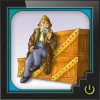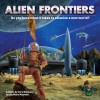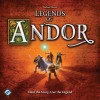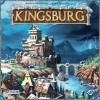
Kevin W
gamer level 4
1574 xp
1574 xp
followers
2
2
Use my invite URL to register (this will give me kudos)
https://boardgaming.com/register/?invited_by=squipix
profile badges




recent achievements

I Love Playin' Games
Claim that you have played a game today by clicking the "Played Today!" button on a game page 50 times.
Claim that you have played a game today by clicking the "Played Today!" button on a game page 50 times.

Gamer - Level 4
Earn Gamer XP to level up!
Earn Gamer XP to level up!

I Got What I Wanted
Add a game to your Owned list that was previously in your Wish list.
Add a game to your Owned list that was previously in your Wish list.

Rated 50 Games
Rate 50 games you have played.
Rate 50 games you have played.
Player Stats
Critic (lvl 1)
255 xp
255 xp
Explorer (lvl 1)
147 xp
147 xp
Professor (lvl 0)
66 xp
66 xp
Reporter (lvl 0)
55 xp
55 xp
About Me
Enthusiast, generally enjoys most titles, but high replayability and a strong resistance to feeling same-y between games is a big plus. Thus the bias towards expandable card-driven titles such as Innovation & 7 Wonders, though not necessarily so.
Also enjoy games that involve negotiation & trading like Catan, as well as more casual family or party games that lends itself to hilarious laughable moments in the right times.





















































Blokus
A territory-holding abstract that’s great & better with more than 2 players should be enough reason to pique one’s interest, no? If not, then let’s open the door:
Enter Blokus, where crystalline polyominoes of red, green, blue, and yellow vie for a place to belong – solid piece clicking upon solid piece, trying to fit in a world that’s just too small for the four of us.
Gameplay
In a 4-player game, each player starts with a pool of 21 pieces of their color. The pieces consist of polyomino shapes (specifically, all free polyominoes composed of 1 to 5 squares) – as seen in and popularized by Tetris. To start, each player picks a corner of the 20×20 board and places any piece that occupies that corner cell. Play proceeds from then on, turn by turn, and each player places a new piece, any new piece, from their pool.
The catch? When placing a new piece of your color, the piece must :
-connect with an existing piece of your color by the corners,
-and must not come in adjacent contact with any existing pieces of your color.
The above link is a great illustration of the catch at work (image by user “WRS WRS” in BoardGameGeek, all rights his). And of course you may not try to fill in an occupied cell.
Eventually the board fills up until no one else can place a new legal piece. For every piece they have left, players get -1 points for every square in them (e.g. a 2×2 square piece = 4 squares, -4 points). No pieces left? +15 points for you. The last piece you placed was the single square piece (the “monomino”)? +5 points for you. Player with the most positive score wins the game.
(Note : for 2p game, each player controls 2 colors. For a 3p game, each player controls 1 color, and the fourth color is a dummy that the three players take turns controlling on its supposed turn. Blokus is generally best played by 2 or 4)
Thoughts
Teaches in less than 5 minutes, very easy to pick up, and amazingly eye-catching and attractive, Blokus is a very very accessible abstract. Hence its frequent designation as a family game or a gateway game. But there is amazing depth in Blokus not apparent in its pretty colors.
Every piece placed down becomes increasingly consequential as the game progresses, as they determine possible future placement paths and available space – resulting in a highly territorial game where the demand to expand and the defensive instinct to block other colors from encroaching pristine territories you have designated for your future pieces strike a balance.
Your choice of pieces matter, and the choice of orientation with which to place those pieces matter even more. As space is consumed guessing other players’ priorities matter – will they expand that way or consume that reserved space next turn? Is using the single-square piece to sneak past this barricade right now worth it? Or should you just take another route to save the single-square piece for a future, safer encounter? Or better yet keep it until the very end for a +5 boost to your points?
That being said, how much it burns your brain is entirely up to you. It is very possible to play the game purely on instinct and have a great time making your way through, blocking other players on will, and painting the blank canvas of a board with your color as you do. The game allows you to have that joy in the same game as heavier strategizers.
Indeed a table of 4 will very likely contain a good mix of both types, and there is territorial fun to be had on all sides either way. A player performing poorly does affect the game as the board becomes free-er for everyone else. But after a game or two players quickly catch on to the meta-strategy, easily solving the problem.
The learning curve is a gentle, inviting slope – but one that never stagnates to a dead-end as even veterans are always on their toes, faced by numerous fresh possibilities. It is, in fact, very hard to come up with a similar end-board twice if not done on purpose. Even when playing against the same players who always go for the same strategy, switching the relative positions of the players go a long way towards creating new balances and equilibrium. Replayability is very high.
Hard to have a “bad game” as no luck is involved (it’s an abstract). Unless 3 other players gang up to block you that is, but that’s a meta problem more than it is a game problem. If that is a definite no-no for you, the 2-player game is unaffected by diplomacy and brings the strategic element up by multiple notches, something that is likely more to your fancy and works amazingly well though makes for a different experience than a 4p game.
Components
Fantastic solid crystalline pieces, and a board where the pieces click firmly. Pieces are durable and highly attractive. Board is spacious and occupies just the right size as a table centerpiece. Not too small and not too large, the right balance between portability and a magnificent haptic experience.
The board starts with a dull grey but ends with a splash of vibrant colors from all the pieces, and gives you a certain satisfaction knowing that you helped paint this canvas into a work of art. Always pretty to look at and fantastic to admire. For this reason Blokus is additionally a plus in helping to attract and ease up friends & family into modern boardgaming.
Conclusion
Plays everybody and checks all the boxes – satisfying aesthetics, strategy, accessible complexity, short playtime and low downtime. As an abstract it is themeless, but evokes “territorial conquest” and “strategic placement” as a resounding element very strongly though not in a heavy-Euro kind of way. Not cheap but not pricey either, easy and satisfying to get many plays and thus provides great game value for your money. A definite recommendation.